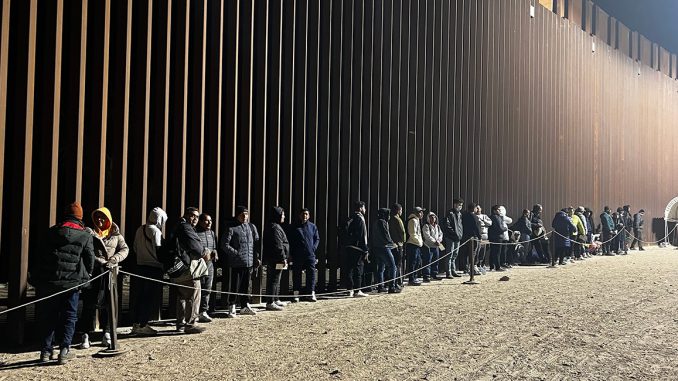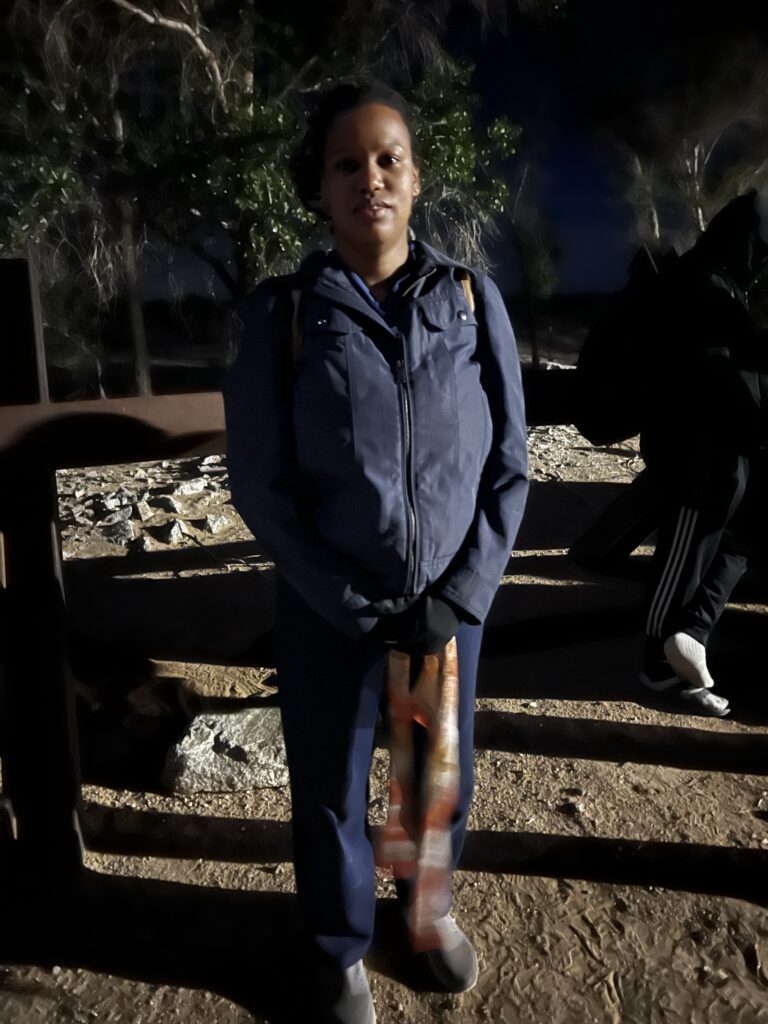
YUMA COUNTY, Ariz. – It was 3 a.m. and a line of about 40 illegal aliens stretched along a section of the border wall waiting to be transported to the local processing center. Behind the group stood another 50 people who had crossed the border illegally into Yuma County, Arizona.
A large white bus full of illegal aliens had just departed for the Border Patrol station in Yuma, about 185 miles southwest of Phoenix, and would return in an hour to take the next 40.
“Your country of origin?” I asked, moving down the line.
Peru, Dominican Republic, Ecuador, Colombia, Georgia, China, India, and Cameroon – nine nations were represented in a group of 50 illegal aliens. Border Patrol confirmed that one of the women in the other line came from Russia. Some smiled as they shared where they were from while others averted the camera, looking down.
According to a local leader, this scene plays out every night in Yuma County.
“This is not a large number of people, Jonathan Lines, a Yuma County district supervisor, said while turning to the group of illegal aliens behind him. “Right now, we’re averaging around 2,000 people a week. Previously, we were averaging almost 1,200 a day, but the numbers seem to drop off at the beginning of the year and then they go back up,” he said.
“Why are they coming in the middle of the night?” I asked Lines, my guide at the border. I had visited the exact same section of the border the afternoon the day before and there were no migrants in sight.
“This is the arrangement that they’ve made with the cartel that is transporting them,” the supervisor explained.
I asked others, including Border Patrol, why illegal aliens were crossing at night, and no one could provide a definite answer as to why so many come at night instead of during the day. Because the cartels control who crosses the border, it is possible the cartels send the groups of illegal migrants across the border at night so they can smuggle drugs and people more discreetly while Border Patrol is occupied.
After crossing the border, the illegal aliens are processed within 48 hours, according to Lines, and then released into the interior of the United States. Some migrants arrange their own transportation to their final destination and others use the resources provided by the the government or nongovernmental organizations to reach their destination in the U.S.
A woman named Yonelin, 26, stood at the back of the line of illegal aliens Thursday morning. She told me she decided to travel to the U.S. from the Dominican Republic for “a good future.” The young woman made the journey by car, bus, and walking, she said.
“Do you think the border is open?” I asked her.
“Yes,” Yonelin said, explaining that someone told her, “it is open, you can go.”

Yonelin’s destination is Minnesota where her grandmother, aunt, uncle, and cousin live. Her 2-year-old daughter is still in the Dominican Republic because Yonelin says she did not have enough money to bring her across the border but hopes to do so in the future.
Local leaders in Yuma say the cartels charge migrants from South and Central America around $7,000 to cross the border.
Yonelin said she wants to work in the U.S., maybe in a restaurant or in hotels as she did in the Dominican Republic. “I like work, only I want a good future,” she said.
Customs and Border Protection reports more than 91,000 encounters of illegal aliens in the Yuma Sector, 181,670 square miles near and along the southern border, since fiscal year 2023 began Oct. 1. Authorities encountered a record number of 310,094 illegal aliens in the Yuma Sector in 2022. That number was 114,488 in fiscal year 2021, up from 8,804 in 2020.
Multiple gaps in border fencing exist in the Yuma Sector, including the well known “Yuma Gap,” sections of incomplete border wall across from the Morelos Dam, a popular crossing point. Former Arizona Republican Gov. Doug Ducey filled some of the gaps in the wall with shipping containers topped with razor wire, but the governor removed the makeshift wall following a Biden administration lawsuit against the state of Arizona and Ducey. The suit argued that the governor’s barrier along sections of the border was illegal.
Construction is now underway to fill at least one of the gaps.
Still, large sections of the border remain wide open.
A short distance from the “Yuma Gap,” border wall materials have been sitting in a fenced area waiting to be used since the Biden administration took office and stopped construction on the wall.
Have an opinion about this article? To sound off, please email letters@DailySignal.com and we’ll consider publishing your edited remarks in our regular “We Hear You” feature. Remember to include the url or headline of the article plus your name and town and/or state.

